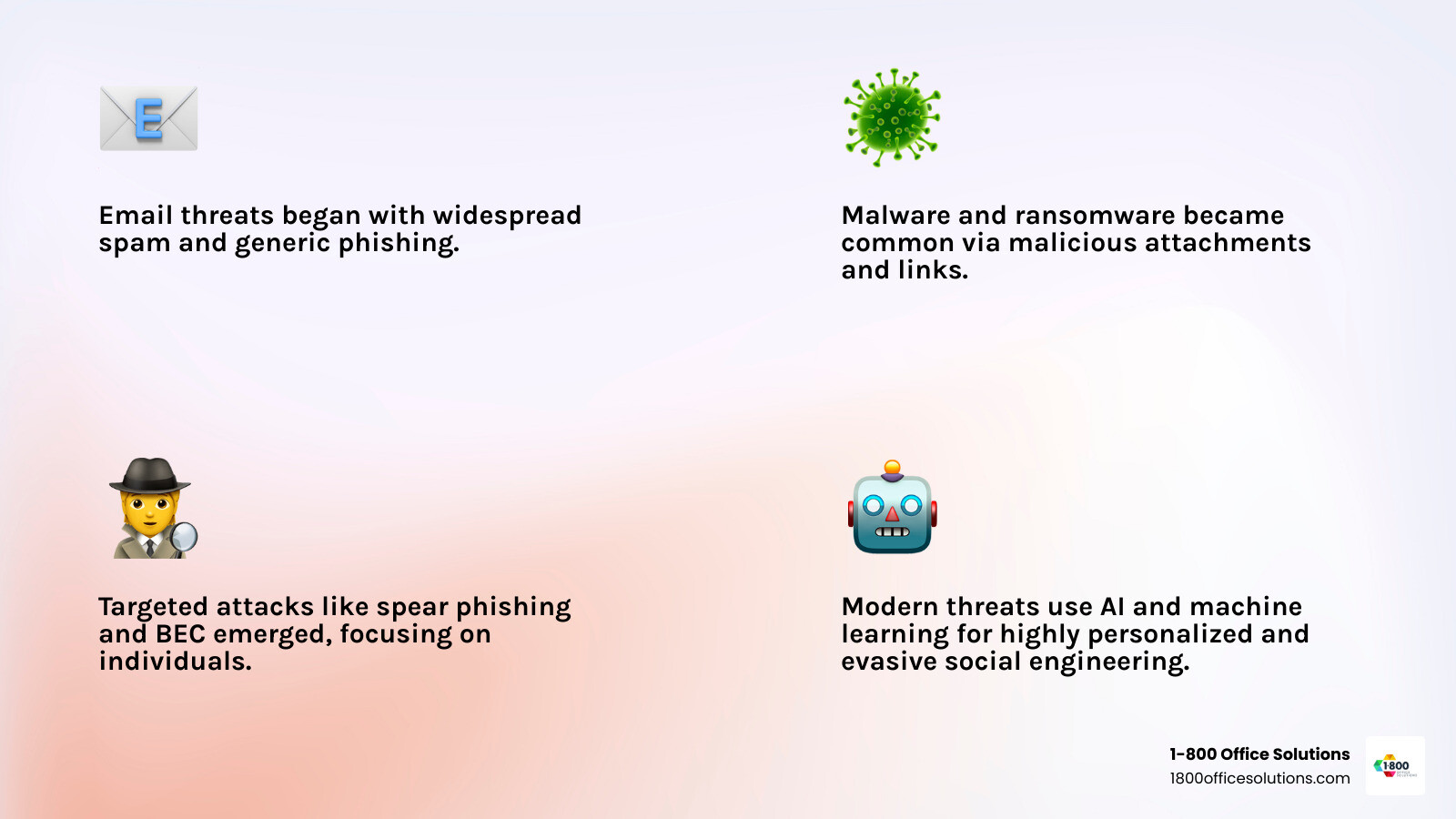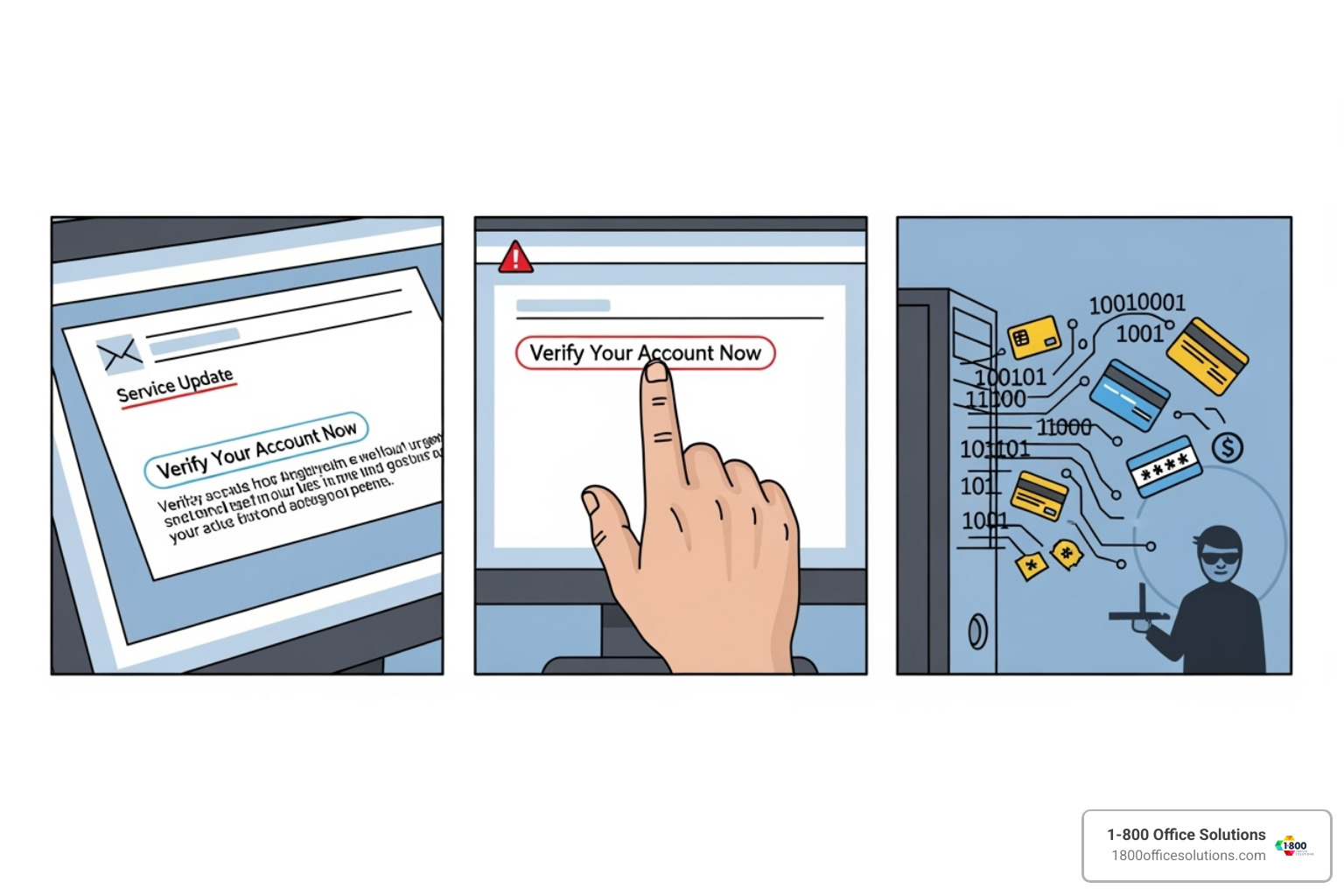An Essential Guide to Comparing Email Security Solutions
AI Overview:
In 2025, email security solutions have become indispensable to business continuity and data protection. As cybercriminals leverage AI-powered phishing, ransomware, and Business Email Compromise (BEC) schemes, traditional spam filters no longer suffice. Modern organizations need adaptive, intelligent systems that predict, prevent, detect, and respond to evolving threats in real time.
Why Email Security Solutions Are Critical for Modern Businesses
Email security solutions are an organization’s first line of defense against cyber threats that target email, protecting your business from costly attacks and reputational damage.
Top solutions offer:
- AI-powered threat detection for sophisticated phishing and BEC attacks.
- Real-time protection against malware, ransomware, and zero-day threats.
- Advanced authentication using DMARC, SPF, and DKIM protocols.
- Post-delivery remediation to remove threats that bypass initial filters.
- Seamless integration with Microsoft 365 and Google Workspace.
Email remains the number one threat vector for cybercriminals. With attackers launching millions of threats daily, traditional email filters can’t keep up with modern, AI-powered attacks.
The stakes are higher than ever. Business Email Compromise (BEC) attacks now cost organizations an average of $134,952 per incident. A single successful phishing email can lead to ransomware, data breaches, and significant operational downtime.
The challenge is that not all email security solutions are equal. Some rely on outdated signature-based detection that misses new threats, while others create too many false positives. Modern solutions, however, use behavioral AI and machine learning to adapt to emerging threats in real-time, stopping attacks that traditional filters miss.
This guide will help you understand the different types of email security solutions, compare their features, and choose the right protection for your organization.

Understanding the Modern Email Threat Landscape
Email is the front door to your business, but it’s also where most cybercriminals try to enter. Today’s attackers use sophisticated, AI-powered attacks that can fool even savvy employees. A comprehensive email security solutions approach requires four key pillars: prediction, prevention, detection, and response. This framework protects your business from financial loss, data breaches, and reputational damage.
The numbers tell a sobering story. The FBI’s Internet Crime Report highlights the massive financial impact of BEC attacks, showing how these email scams cost businesses billions annually. Modern threats have evolved from broad scams to highly personalized attacks that study your business and employees.
Today’s threats include phishing and spear phishing that impersonate trusted contacts, Business Email Compromise (BEC) schemes that trick employees into wire transfers, ransomware and malware in attachments, account takeover (ATO) attacks that hijack legitimate accounts, and social engineering tactics that exploit human psychology.
The High Cost of Inaction
The price of inadequate email protection extends far beyond the initial attack. While the average cost of a BEC attack exceeds $130,000, the real damage unfolds over time.
- Reputational damage drives customers away when they lose trust in your ability to protect their data.
- Operational downtime halts productivity as your team scrambles to assess damage and restore systems.
- Regulatory fines can add insult to injury, especially if sensitive customer data was compromised.
Recovering from a successful email attack often costs ten times more than investing in proper protection upfront.
Primary Types of Email Threats
Understanding your enemy is the first step. Modern email threats have evolved far beyond simple spam.
- Malware: Hidden in seemingly legitimate attachments.
- Phishing: Emails designed to steal credentials.
- Spear Phishing & Whaling: Phishing campaigns customized for specific individuals or executives.
- Business Email Compromise (BEC): Impersonating executives or vendors to authorize fraudulent wire transfers.
- Account Takeover (ATO): Using legitimate, compromised accounts to launch internal attacks.
- Zero-Day Threats: Exploiting previously unknown vulnerabilities, making them difficult to detect with traditional security.
- Data Exfiltration: Quietly stealing sensitive information over time.

The sophistication of these attacks means that traditional email filters are no longer adequate. Modern threats require modern email security solutions that can adapt to new attack patterns in real-time.
Core Features of Effective Email Security Solutions
Modern email security is a sophisticated defense system designed to predict, prevent, detect, and respond to an evolving threat landscape. Effective email security solutions integrate a suite of features that work together to provide comprehensive protection.

The best solutions combine cutting-edge technology like AI and Machine Learning with security fundamentals. They anticipate and adapt to new threats, not just react to known ones. Key features include Advanced Threat Protection (ATP), which examines the intent behind messages, and Data Loss Prevention (DLP), which prevents sensitive data from leaving your organization.
Perhaps most importantly, modern solutions offer post-delivery remediation—the ability to remove threats from inboxes even after they’ve been delivered. This is a critical capability for catching threats that initially appear safe.
AI-Powered Threat Detection
Since attackers use AI, our defenses must be equally intelligent. Modern email security solutions use AI and machine learning to analyze data and identify subtle anomalies that traditional systems miss.
- Behavioral analysis learns normal communication patterns for each user, flagging activity that deviates from the norm, such as impersonation attempts.
- Anomaly detection identifies unusual events, like a login from a new country or a sudden change in email tone, which can signal a social engineering attack.
- Relationship graphs map communication flows, flagging suspicious requests between people who don’t normally interact.
- Natural Language Processing (NLP) analyzes the text in emails for linguistic cues that suggest malicious intent, like unusual grammar or tone.
- Predictive defense uses machine learning models trained on vast threat datasets to neutralize new attack variants before they are widely known.
Foundational Email Authentication Protocols
Effective email security solutions start by verifying sender identity. These protocols are like checking an ID at the door.
- Sender Policy Framework (SPF) specifies which mail servers are authorized to send email for your domain.
- DomainKeys Identified Mail (DKIM) adds a cryptographic signature to emails, ensuring the content hasn’t been tampered with.
- Domain-based Message Authentication, Reporting, and Conformance (DMARC) builds on SPF and DKIM, telling receiving servers what to do with emails that fail authentication (quarantine, reject, or monitor).
Together, these protocols defend against domain spoofing and impersonation, common tactics in phishing and BEC attacks.
Advanced Protection and Content Filtering
Beyond authentication, top email security solutions use multiple layers of content analysis to stop malicious elements.
- Sandboxing opens suspicious attachments and links in a safe, isolated environment to observe their behavior without risking your systems.
- URL rewriting and time-of-click analysis checks links against real-time threat intelligence every time they are clicked, protecting against delayed attacks.
- Data Loss Prevention (DLP) policies scan outgoing emails for sensitive information like credit card or social security numbers, blocking unauthorized transmissions.
- Email encryption ensures that even if a message is intercepted, only the intended recipient can read its contents.
- User training integration provides tools to educate employees, turning your workforce into an extension of your security team.
Comparing Deployment Models: Gateway vs. API-Based Solutions
When choosing email security solutions, a key decision is the deployment model. This is like choosing between a security guard at the front gate (Gateway) versus security cameras throughout the building (API-based). Both work, but they protect in different ways.
The traditional approach is the Secure Email Gateway (SEG), but as businesses move to cloud email like Microsoft 365 and Google Workspace, API-based solutions have emerged with compelling advantages.
| Feature | Secure Email Gateway (SEG) | API-Based (Cloud-Native) Solutions |
|---|---|---|
| Deployment Method | MX Record redirection (all email flows through the gateway) | Direct API integration with email provider (e.g., Microsoft 365, Google Workspace) |
| Threat Visibility | Primarily external (inbound/outbound email) | External (inbound/outbound) and internal email traffic |
| Integration with Cloud Suites | Pre-delivery filtering, sits “in front” of native security | Works alongside/improves native security, deeper integration |
| Primary Defense Mechanism | Blocks threats before delivery (pre-delivery) | Can block pre-delivery (inline API) or respond post-delivery (journaling API) |
Secure Email Gateway (SEG)
A Secure Email Gateway acts as a checkpoint for all incoming and outgoing email. By changing your domain’s MX records, you route all mail through the gateway, which inspects it and forwards clean messages to your server.
- Pros: As an established technology, SEGs offer robust pre-delivery filtering, blocking many threats at the perimeter before they reach your network.
- Cons: SEGs have a blind spot for internal threats, as emails between colleagues don’t pass through the external gateway. This leaves you vulnerable if an internal account is compromised. Sophisticated attacks can also be crafted to bypass traditional gateway defenses.
API-Based (Cloud-Native) Solutions
API-based email security solutions connect directly to your email platform (e.g., Microsoft 365) via APIs, rather than rerouting traffic. This is like giving a security expert direct access to your building’s internal security system.
- Pros: This approach allows for fast deployment without complex MX record changes. It provides crucial visibility into internal traffic, catching threats that spread between employees. By working with your platform’s built-in protections, these solutions improve native security and use deeper integration to understand user behavior and context for more accurate threat detection.
- Cons: The effectiveness depends on scanning capabilities. Some solutions scan inline to block threats pre-delivery, while others focus on post-delivery detection and removal. The timing of this protection is a key consideration.
Many organizations find the cloud-native, API-based approach aligns better with modern, collaborative work environments.
How to Choose the Right Email Security Solution for Your Business
Choosing the right email security solutions doesn’t have to be overwhelming. The key is to take a systematic approach: assess your risk profile, evaluate vendor criteria, and implement best practices for long-term success.
We’ve helped businesses across Florida, Michigan, Georgia, and other states steer this decision. The most successful companies treat email security as a critical investment, not just another expense. For more information about our comprehensive cybersecurity services, we’re here to guide you.
Evaluating Detection Efficacy and Performance
Detection efficacy is where the rubber meets the road. An email security solution that can’t catch threats is worthless.
Independent test results tell the real story. When solutions boast a 99.96% spam catch rate and an excellent 99.84% malware detection rate, these third-party metrics show how a solution performs in the real world.
However, low false-positive rates are just as important. A system that constantly blocks legitimate emails will frustrate your team and may lead them to ignore security alerts. The best solutions are aggressive against threats but intelligent enough to let good emails through, achieving high total accuracy.
Assessing Integration and Management Capabilities
Even the most powerful email security solutions are ineffective if they’re too complex to manage.
- Seamless integration with your email platform (Microsoft 365 or Google Workspace) is a must. The solution should plug in smoothly without disrupting workflows.
- Compatibility with SIEM/SOAR tools is crucial for larger organizations, allowing your security systems to communicate and automate responses to threats.
- An intuitive management dashboard makes daily operations easier. You should be able to see your security status, adjust policies, and understand alerts without needing extensive technical support.
- Actionable reporting and analytics help you make informed decisions and prove ROI. Good reports answer key questions about threat types, vulnerabilities, and the effectiveness of your security investment.
Considering Support, Pricing, and Scalability
Practical considerations are just as important as technical features when choosing email security solutions.
- 24/7 technical support is essential. Cyberattacks don’t keep business hours, and you need a vendor who can provide real human support around the clock.
- Transparent pricing models, such as per-user monthly fees, make budgeting predictable. Avoid solutions with hidden fees or complex licensing.
- Scalability ensures the solution can grow with your business. The system you choose today should accommodate future growth without requiring a complete overhaul.
Frequently Asked Questions about Email Security Solutions
Business leaders often ask the same questions about email security solutions. Here are answers to some of the most common concerns.
How do email security solutions protect against Business Email Compromise (BEC)?
BEC attacks rely on social engineering, not malicious links. Modern email security solutions counter this with AI-powered behavioral analysis. The system learns the normal communication patterns of your team, creating a digital fingerprint for users like your CEO. When an impersonator sends an urgent wire transfer request, the AI detects subtle differences in language, timing, or process that a human might miss.
These solutions also use DMARC authentication to verify that an email claiming to be from your domain is legitimate, blocking spoofing attempts. By analyzing relationship graphs, the system can also flag unusual communication, such as a supposed executive emailing an employee for the first time with a financial request.
Can I rely solely on the built-in security of Microsoft 365 or Google Workspace?
The short answer is: it's a good start, but not enough for complete protection. Native security platforms like Microsoft Defender provide a solid baseline against common threats, but specialized third-party solutions consistently catch what they miss. Industry data shows that dedicated email security vendors detect a significant percentage of advanced threats—like sophisticated phishing and zero-day attacks—that get past built-in filters.
Email security vendors focus exclusively on this threat vector, allowing them to adapt faster to new attack techniques. A layered defense approach, combining native security with a robust third-party solution, provides the best protection. Think of it as having both a seatbelt and airbags in your car; each adds a critical layer of safety.
What is the difference between email security and email encryption?
These two terms are often confused. Email security is the comprehensive strategy to protect your organization from all email-based threats, including spam, malware, phishing, and account takeover. It's the overall defense system.
Email encryption is one specific tool within that system. Encryption scrambles the content of an email so that only the intended recipient can read it. It's like putting a sensitive message in a locked box. For example, security would scan an outbound financial report for malware, while encryption would protect the report's confidential data from being read if intercepted.
Both are essential. Email security protects against active threats, while encryption protects the confidentiality of your data. Most modern security solutions include encryption as part of their suite.
Conclusion
Email security solutions are as essential as internet connectivity. Email remains the primary gateway for cybercriminals, who use sophisticated attacks that can devastate unprepared organizations.
Traditional email filters cannot keep pace. Modern threats require AI-driven defenses that analyze communication patterns, detect anomalies, and respond to attacks in real-time. However, technology alone is not enough. A multi-layered strategy is essential, combining robust authentication protocols like DMARC, advanced threat protection, and the right deployment model for your business.
This technology must be paired with user education. Your team is a critical part of your defense and needs to understand how to spot and report suspicious activity.
At 1-800 Office Solutions, we understand that the right email security strategy can transform a business’s security posture. The cost of a single successful attack—averaging over $130,000 for BEC incidents—far exceeds the investment in proper protection. Your reputation, data, and operational continuity are too valuable to leave to chance.
Ready to strengthen your defenses? Protect your business with comprehensive email security solutions custom to your specific needs.












